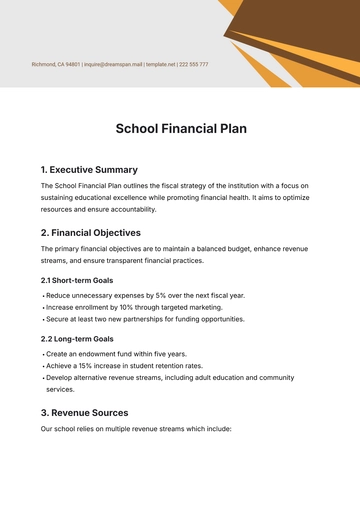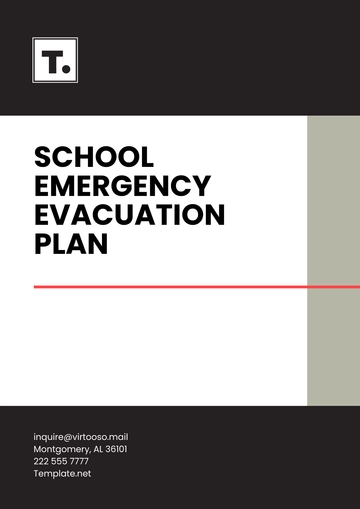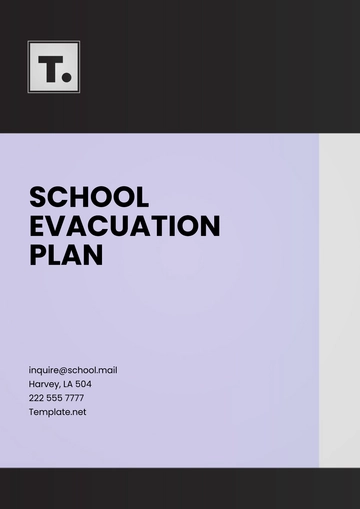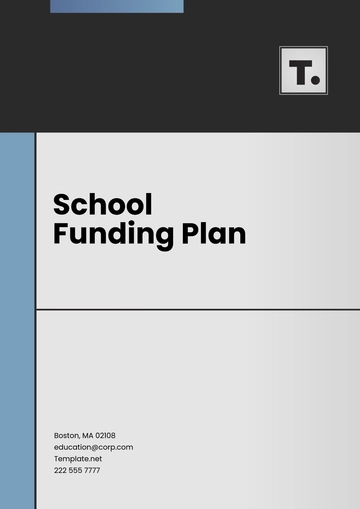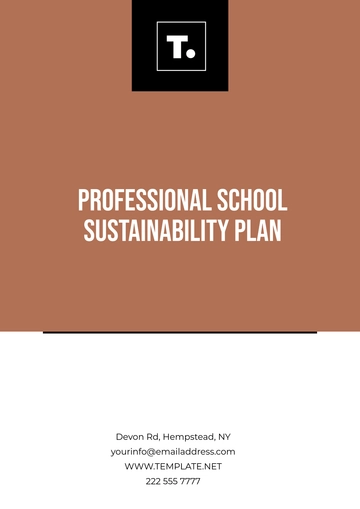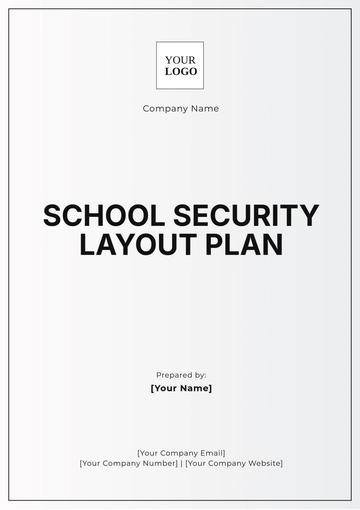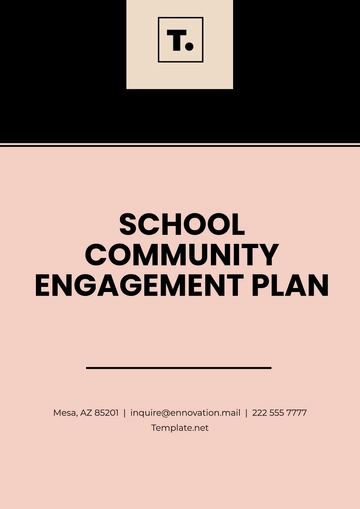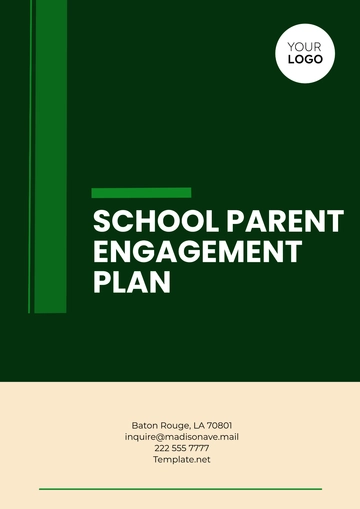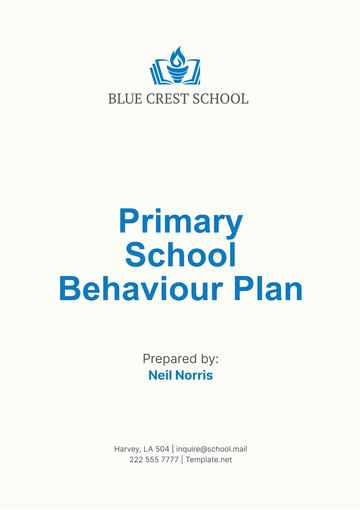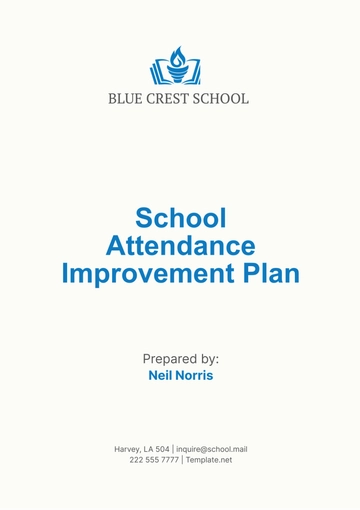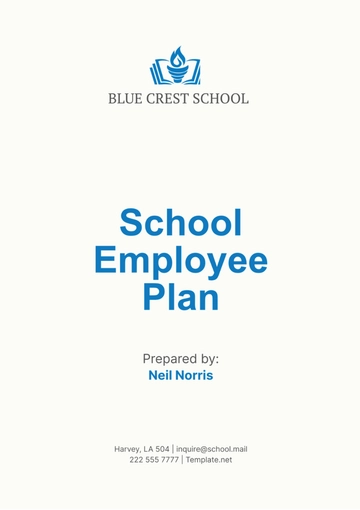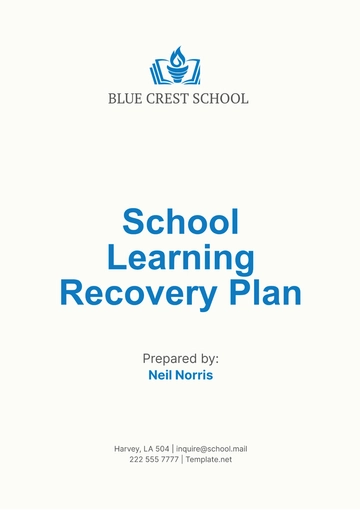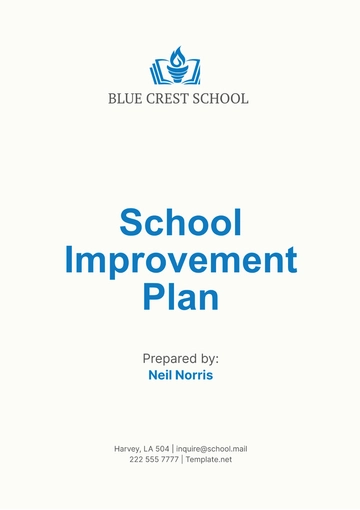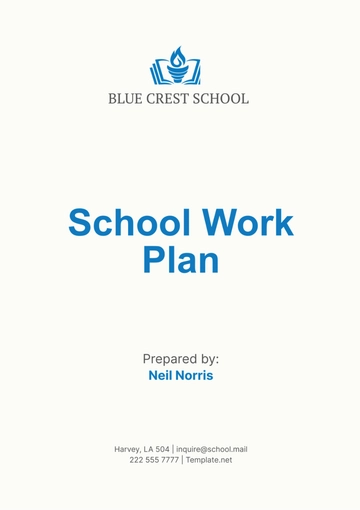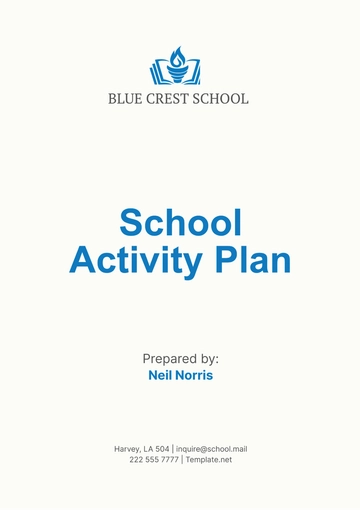Free School Investment Plan
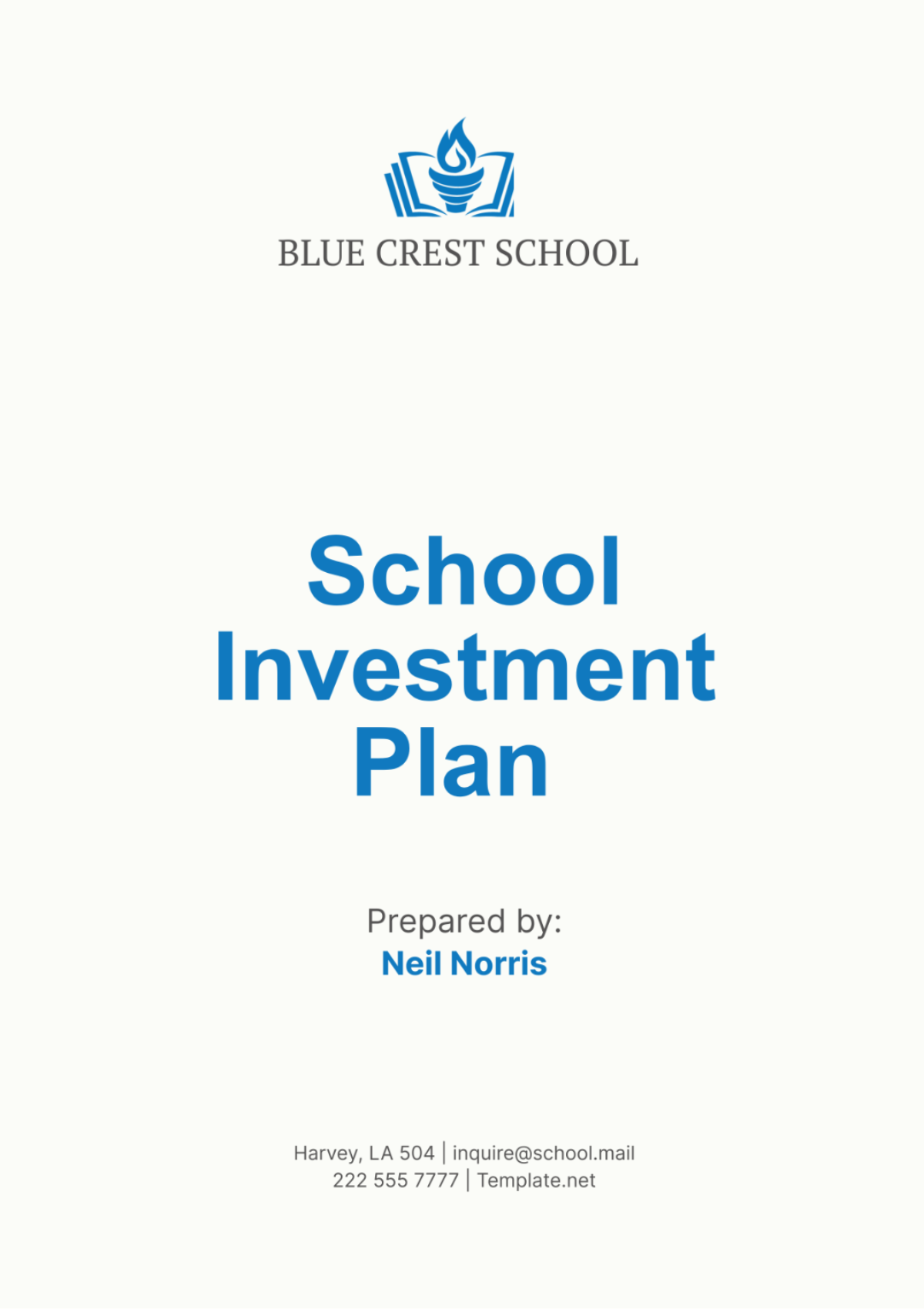
Introduction
Investing in educational infrastructure, resources, and programs is essential to fostering a high-quality learning environment. The [Your Company Name] School Investment Plan aims to strategically allocate financial resources to enhance academic performance, support student development, improve facilities, and ensure sustainable growth. This plan outlines the key investment areas, projected costs, funding sources, and the anticipated impact on the school community.
Executive Summary
The School Investment Plan focuses on four primary areas: academic enhancement, infrastructure development, technology integration, and staff professional development. These investments are expected to significantly improve educational outcomes, provide a safe and conducive learning environment, and ensure the long-term sustainability of [Your Company Name]. By strategically targeting these areas, the plan aims to address both immediate needs and future growth, ensuring that the school can adapt to evolving educational standards and technologies.
Key Investment Areas
Curriculum and Academic Programs: Investment in curriculum and academic programs is essential for maintaining high educational standards and supporting student success. This includes updating curriculum content, introducing new programs, and providing necessary educational materials to ensure that students receive a comprehensive and engaging education.
Technology and Innovation: Integrating advanced technology into the classroom is crucial for preparing students for the future. This involves upgrading infrastructure, providing training for teachers, and ensuring all students have access to modern learning tools, thus enhancing the overall teaching and learning experience.
Facility Improvements: Creating a safe and conducive learning environment is vital for student well-being and academic success. This includes upgrading existing infrastructure, enhancing safety measures, and creating modern learning spaces that support diverse educational activities and programs.
Staff Development: Investing in staff professional development ensures that educators are well-equipped with the latest teaching methodologies and best practices. Continuous training and development opportunities help in maintaining a high standard of teaching and fostering a culture of continuous improvement within the school.
The total projected investment for the next five years is $1,000,000, with funding sourced from government grants, private donations, and internal revenue. This comprehensive investment strategy is designed to ensure that [Your Company Name] can deliver high-quality education and support the holistic development of all students.
1. Curriculum and Academic Programs
Enhancing curriculum and academic programs is critical for maintaining high educational standards and supporting student success. Investments in this area will focus on updating curriculum content, introducing new programs, and providing necessary educational materials. These investments are intended to create a dynamic and engaging learning environment that caters to the diverse needs of students and prepares them for future academic and career success.
Investment Details
Curriculum Development:
Objective: Update and enhance the existing curriculum to align with modern educational standards and best practices.
Investment: $100,000
Activities: Hire curriculum specialists to review and update the curriculum, purchase new textbooks and resources, and develop interdisciplinary programs that encourage critical thinking and problem-solving skills.
Extracurricular Programs:
Objective: Expand extracurricular activities to support holistic student development.
Investment: $50,000
Activities: Introduce a variety of arts, sports, and technology clubs to cater to different student interests and talents. Provide necessary equipment and materials to ensure these programs are well-supported and can offer meaningful experiences.
Special Education:
Objective: Develop comprehensive support programs for students with special needs.
Investment: $75,000
Activities: Hire special education teachers, purchase adaptive learning tools, and create specialized learning spaces that accommodate diverse learning needs and ensure all students have access to quality education.
Expected Impact
Improved Student Performance: By enhancing the curriculum and providing additional academic support, students are expected to show significant improvements in core academic subjects.
Increased Engagement: Expanded extracurricular programs will lead to higher levels of student engagement and participation, contributing to a more well-rounded educational experience.
Enhanced Support for Special Needs Students: Comprehensive support programs will ensure that students with special needs receive the necessary resources and accommodations to succeed academically.
2. Technology and Innovation
Integrating advanced technology into the classroom is essential for preparing students for the future. Investments in technology will focus on upgrading infrastructure, providing training for teachers, and ensuring all students have access to modern learning tools. These investments are designed to create a technology-rich learning environment that enhances the overall educational experience and equips students with the skills needed for the 21st century.
Investment Details
Classroom Technology:
Objective: Equip classrooms with the latest technology to enhance the learning experience.
Investment: $200,000
Activities: Purchase and install interactive whiteboards, laptops, tablets, and educational software. These tools will facilitate interactive and engaging lessons, making learning more dynamic and accessible.
Digital Learning Platforms:
Objective: Implement digital platforms to facilitate remote and blended learning.
Investment: $50,000
Activities: Subscribe to e-learning platforms, develop an online learning management system, and provide training for teachers and students to effectively use these digital tools. This will ensure that learning can continue seamlessly, regardless of location.
STEM Education:
Objective: Promote STEM education through innovative programs and resources.
Investment: $75,000
Activities: Create STEM labs equipped with the latest technology, purchase robotics kits, and offer coding and engineering workshops. These initiatives will foster a strong interest in STEM subjects and provide students with hands-on learning experiences.
Expected Impact
Enhanced Teaching and Learning: The integration of technology will create a more engaging and interactive learning environment, leading to better educational outcomes.
Increased Access to Quality Education: Digital platforms will ensure that all students have access to high-quality education, regardless of their physical location.
Improved STEM Performance: Investments in STEM education will result in increased student interest and improved performance in science, technology, engineering, and mathematics subjects.
3. Facility Improvements
Creating a safe and conducive learning environment is essential for student well-being and academic success. Investments in facility improvements will focus on upgrading existing infrastructure, enhancing safety measures, and creating modern learning spaces. These investments aim to provide a physical environment that supports effective teaching and learning while ensuring the safety and comfort of students and staff.
Investment Details
Building Renovations:
Objective: Upgrade and maintain school buildings to ensure they meet safety and accessibility standards.
Investment: $250,000
Activities: Renovate classrooms, repair roofing, update electrical systems, and improve accessibility features. These renovations will ensure that all facilities are safe, functional, and conducive to learning.
Safety Enhancements:
Objective: Implement comprehensive safety measures to protect students and staff.
Investment: $50,000
Activities: Install security cameras, upgrade fire safety systems, and enhance emergency preparedness plans. These measures will create a safer school environment, giving peace of mind to students, parents, and staff.
Outdoor Learning Spaces:
Objective: Create outdoor learning environments to support experiential and nature-based education.
Investment: $75,000
Activities: Develop outdoor classrooms, gardens, and play areas. These spaces will provide students with opportunities for hands-on learning and physical activity, contributing to their overall development and well-being.
Expected Impact
Safer Learning Environments: Upgraded safety measures will ensure that the school environment is secure and well-prepared for emergencies.
Enhanced Student Engagement: Modern and well-maintained facilities will create a more attractive and engaging learning environment, encouraging students to participate actively in their education.
Improved School Aesthetic and Functionality: Facility improvements will enhance the overall aesthetic and functionality of the school, creating a more pleasant and effective space for learning and teaching.
4. Staff Development
Investing in staff professional development is crucial for maintaining a high standard of teaching and ensuring continuous improvement. This section outlines the investments in training programs, workshops, and other professional development initiatives, aimed at enhancing the skills and well-being of the staff at [Your Company Name].
Investment Details
Professional Development Programs:
Objective: Provide continuous professional development opportunities for teachers and staff.
Investment: $100,000
Activities: Conduct a series of workshops focused on current educational trends, teaching methodologies, and classroom management techniques. Sponsor attendance at national and international educational conferences to expose staff to innovative practices and global perspectives. Offer a variety of online training courses that staff can complete at their own pace, covering a wide range of topics from technology integration to differentiated instruction.
Leadership Training:
Objective: Develop leadership skills among school administrators and senior teachers.
Investment: $50,000
Activities: Implement comprehensive leadership training programs designed to enhance strategic planning, decision-making, and team management skills. Establish mentorship schemes where experienced leaders can guide and support emerging leaders within the school. Offer management courses that focus on effective school administration, conflict resolution, and organizational behavior.
Wellness Programs:
Objective: Promote the well-being and mental health of staff members.
Investment: $25,000
Activities: Introduce a range of wellness initiatives aimed at improving the physical and mental health of staff. Provide access to counseling services and stress management workshops to support mental well-being. Organize regular health and wellness workshops covering topics such as nutrition, exercise, and work-life balance.
Expected Impact
Enhanced Teaching Quality: Ongoing professional development will ensure teachers are well-versed in the latest educational practices, leading to higher-quality instruction and improved student outcomes.
Stronger Leadership: Leadership training will cultivate a cadre of effective leaders who can inspire and manage their teams efficiently, contributing to a positive school culture and effective decision-making.
Improved Staff Well-being: Wellness programs will help reduce burnout and stress among staff, leading to higher job satisfaction, better mental health, and overall improved performance.
5. Funding Sources
Securing adequate funding is essential for the successful implementation of the investment plan. This section outlines the various funding sources that [Your Company Name] will pursue to finance the outlined investments. By diversifying funding sources, the school can ensure financial stability and sustainability, while also engaging the broader community in supporting educational initiatives.
Funding Sources
Government Grants:
Details: Apply for federal and state education grants specifically designed to support curriculum development, technology integration, and facility improvements. These grants often require detailed applications and adherence to specific guidelines, but they can provide substantial funding.
Projected Amount: $400,000
Private Donations:
Details: Launch comprehensive fundraising campaigns targeting alumni, parents, and local businesses. These campaigns can include events such as galas, charity auctions, and crowdfunding initiatives. Personal appeals and targeted outreach can also encourage significant donations for specific projects.
Projected Amount: $300,000
Internal Revenue:
Details: Allocate a portion of the school’s internal revenue generated from tuition fees and other sources, such as facility rentals and special programs. This internal funding will provide a reliable base of support for the investment plan.
Projected Amount: $200,000
Corporate Sponsorships:
Details: Seek sponsorships from corporations, especially those with a vested interest in education and technology. Corporate sponsors can provide financial support as well as in-kind contributions such as technology equipment and resources for STEM education programs. Building long-term partnerships with these corporations can also lead to ongoing support.
Projected Amount: $100,000
Expected Impact
Secured and Diversified Funding: By leveraging multiple funding sources, [Your Company Name] can secure the necessary financial support to implement the investment plan fully. This approach reduces dependency on any single source and ensures financial stability.
Increased Financial Stability and Sustainability: Diversified funding will not only support immediate investment needs but also contribute to the school’s long-term financial health, allowing for continuous improvement and innovation.
Stronger Community and Corporate Engagement: Engaging the community and corporate partners through targeted fundraising efforts will foster a sense of shared responsibility and collaboration, enhancing the overall support network for the school’s initiatives.
6. Monitoring and Evaluation
Monitoring and evaluation are crucial for assessing the effectiveness of the investment plan and ensuring that resources are used efficiently. This section outlines the processes for tracking progress and evaluating the impact of the investments.
Monitoring Plan
Investment Area | Key Performance Indicator (KPI) | Data Source | Frequency |
|---|---|---|---|
Curriculum and Academic Programs | Student performance, program participation rates | Academic records, surveys | Quarterly |
Technology and Innovation | Usage rates, student and teacher feedback | IT logs, surveys | Quarterly |
Facility Improvements | Safety reports, maintenance logs | Safety inspections, facility audits | Bi-Annual |
Staff Development | Workshop attendance, staff performance reviews | HR records, evaluations | After each event |
Evaluation Plan
Regular Assessments: Conduct regular assessments to measure progress against KPIs. These assessments help in identifying strengths and areas for improvement.
Stakeholder Feedback: Collect feedback from students, parents, and staff to evaluate the effectiveness of investments and identify areas for further improvement.
Performance Reviews: Conduct performance reviews for staff to ensure accountability and continuous improvement. These reviews help in setting performance goals and identifying professional development needs.
Annual Reports: Prepare annual reports summarizing achievements, challenges, and recommendations for future investments. These reports provide a comprehensive overview of the impact of the investments and guide future planning.
Expected Impact
Continuous improvement in academic performance and program effectiveness.
Efficient use of resources through regular monitoring and evaluation.
Enhanced accountability and transparency in the use of investment funds.
7. Conclusion
The [Your Company Name] School Investment Plan provides a comprehensive framework for strategically allocating resources to enhance educational outcomes, support student development, improve facilities, and ensure sustainable growth. By focusing on key areas such as curriculum development, technology integration, facility improvements, and staff development, the plan aims to create a high-quality learning environment that prepares students for success in the future.
Through careful planning, diversified funding, and ongoing monitoring and evaluation, [Your Company Name] is committed to achieving its mission of providing exceptional education and fostering the holistic development of its students. This investment plan serves as a roadmap for realizing these goals and ensuring the long-term success and sustainability of the school.
- 100% Customizable, free editor
- Access 1 Million+ Templates, photo’s & graphics
- Download or share as a template
- Click and replace photos, graphics, text, backgrounds
- Resize, crop, AI write & more
- Access advanced editor
Strategically manage educational investments with Template.net's School Investment Plan Template. This customizable tool, powered by our AI editor, enables detailed financial planning and resource allocation. Tailored for educational institutions, it ensures clarity and alignment in investment strategies. Streamline your financial planning and optimize resource utilization with Template.net's versatile investment plan template.
You may also like
- Finance Plan
- Construction Plan
- Sales Plan
- Development Plan
- Career Plan
- Budget Plan
- HR Plan
- Education Plan
- Transition Plan
- Work Plan
- Training Plan
- Communication Plan
- Operation Plan
- Health And Safety Plan
- Strategy Plan
- Professional Development Plan
- Advertising Plan
- Risk Management Plan
- Restaurant Plan
- School Plan
- Nursing Home Patient Care Plan
- Nursing Care Plan
- Plan Event
- Startup Plan
- Social Media Plan
- Staffing Plan
- Annual Plan
- Content Plan
- Payment Plan
- Implementation Plan
- Hotel Plan
- Workout Plan
- Accounting Plan
- Campaign Plan
- Essay Plan
- 30 60 90 Day Plan
- Research Plan
- Recruitment Plan
- 90 Day Plan
- Quarterly Plan
- Emergency Plan
- 5 Year Plan
- Gym Plan
- Personal Plan
- IT and Software Plan
- Treatment Plan
- Real Estate Plan
- Law Firm Plan
- Healthcare Plan
- Improvement Plan
- Media Plan
- 5 Year Business Plan
- Learning Plan
- Marketing Campaign Plan
- Travel Agency Plan
- Cleaning Services Plan
- Interior Design Plan
- Performance Plan
- PR Plan
- Birth Plan
- Life Plan
- SEO Plan
- Disaster Recovery Plan
- Continuity Plan
- Launch Plan
- Legal Plan
- Behavior Plan
- Performance Improvement Plan
- Salon Plan
- Security Plan
- Security Management Plan
- Employee Development Plan
- Quality Plan
- Service Improvement Plan
- Growth Plan
- Incident Response Plan
- Basketball Plan
- Emergency Action Plan
- Product Launch Plan
- Spa Plan
- Employee Training Plan
- Data Analysis Plan
- Employee Action Plan
- Territory Plan
- Audit Plan
- Classroom Plan
- Activity Plan
- Parenting Plan
- Care Plan
- Project Execution Plan
- Exercise Plan
- Internship Plan
- Software Development Plan
- Continuous Improvement Plan
- Leave Plan
- 90 Day Sales Plan
- Advertising Agency Plan
- Employee Transition Plan
- Smart Action Plan
- Workplace Safety Plan
- Behavior Change Plan
- Contingency Plan
- Continuity of Operations Plan
- Health Plan
- Quality Control Plan
- Self Plan
- Sports Development Plan
- Change Management Plan
- Ecommerce Plan
- Personal Financial Plan
- Process Improvement Plan
- 30-60-90 Day Sales Plan
- Crisis Management Plan
- Engagement Plan
- Execution Plan
- Pandemic Plan
- Quality Assurance Plan
- Service Continuity Plan
- Agile Project Plan
- Fundraising Plan
- Job Transition Plan
- Asset Maintenance Plan
- Maintenance Plan
- Software Test Plan
- Staff Training and Development Plan
- 3 Year Plan
- Brand Activation Plan
- Release Plan
- Resource Plan
- Risk Mitigation Plan
- Teacher Plan
- 30 60 90 Day Plan for New Manager
- Food Safety Plan
- Food Truck Plan
- Hiring Plan
- Quality Management Plan
- Wellness Plan
- Behavior Intervention Plan
- Bonus Plan
- Investment Plan
- Maternity Leave Plan
- Pandemic Response Plan
- Succession Planning
- Coaching Plan
- Configuration Management Plan
- Remote Work Plan
- Self Care Plan
- Teaching Plan
- 100-Day Plan
- HACCP Plan
- Student Plan
- Sustainability Plan
- 30 60 90 Day Plan for Interview
- Access Plan
- Site Specific Safety Plan
